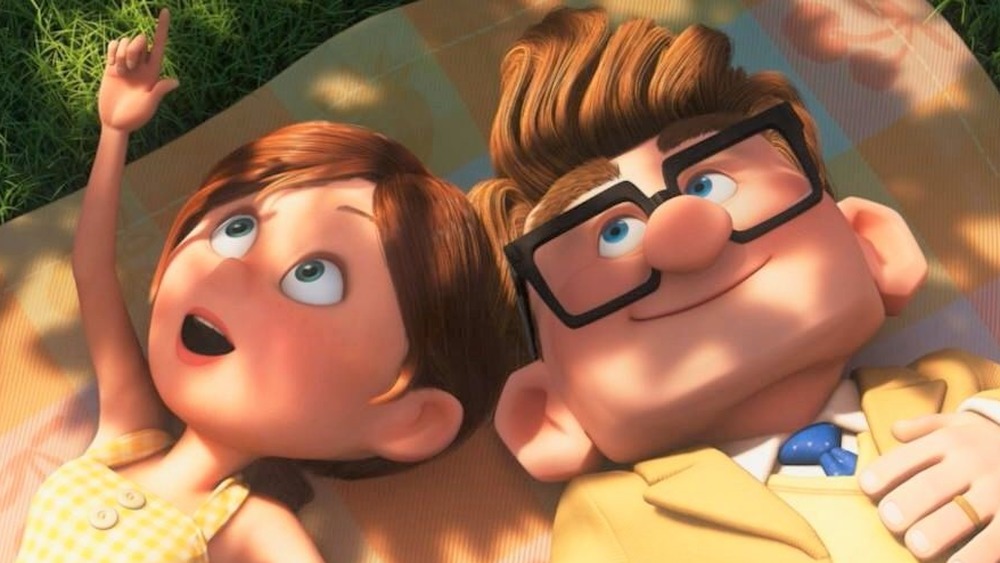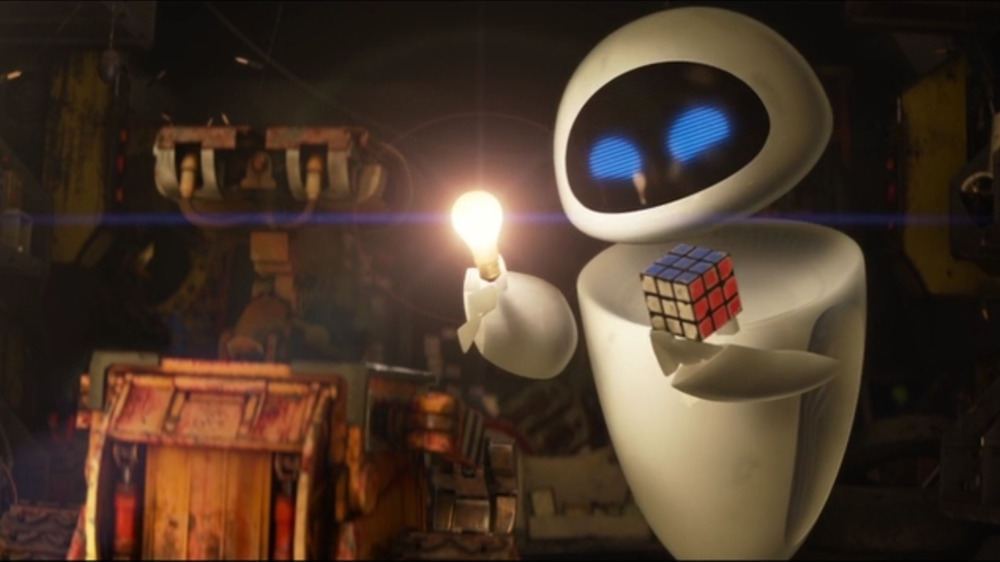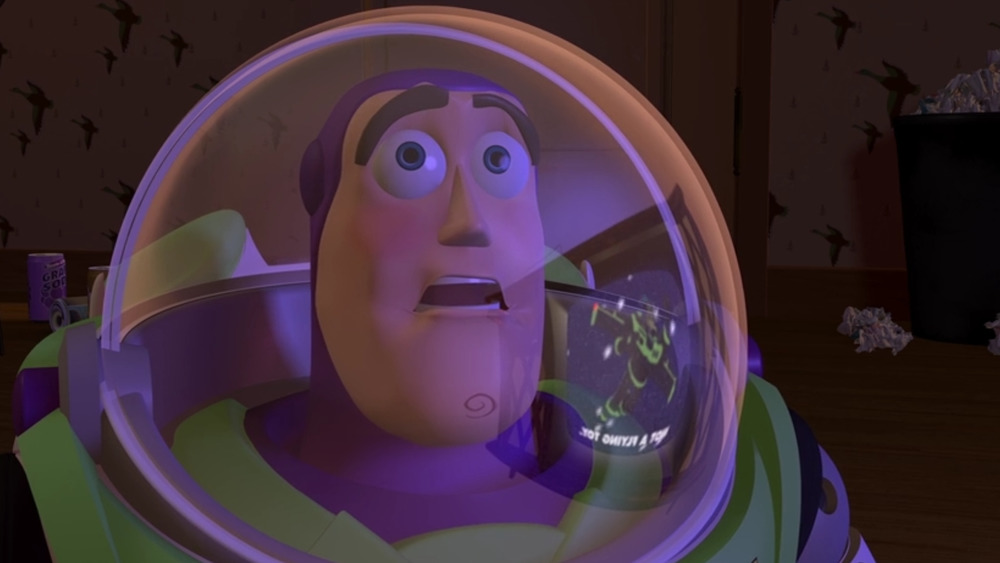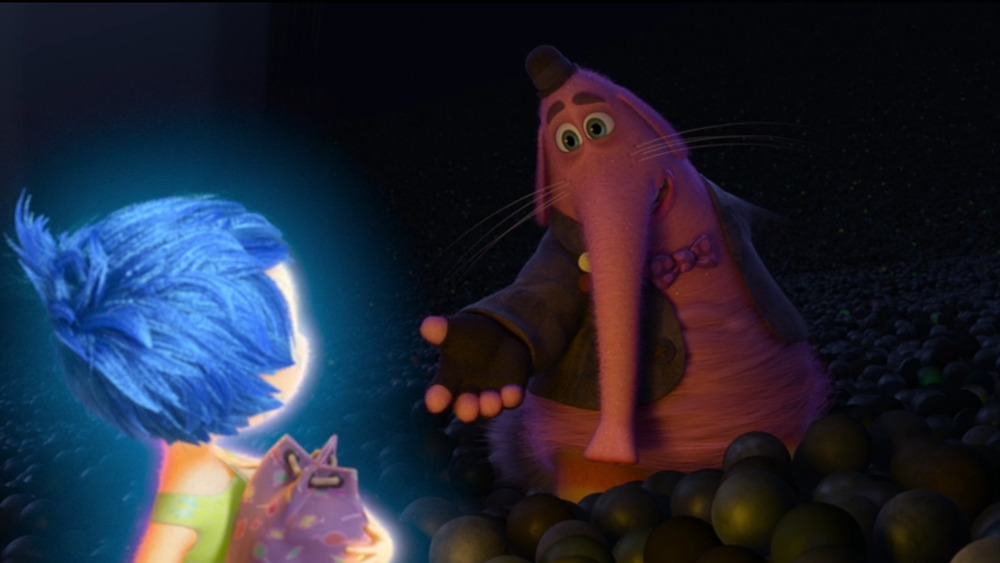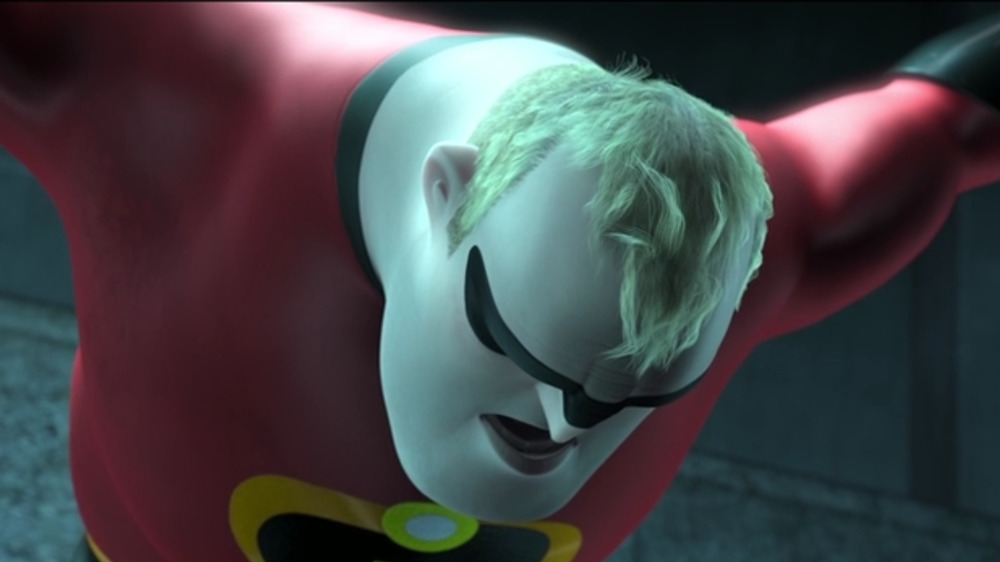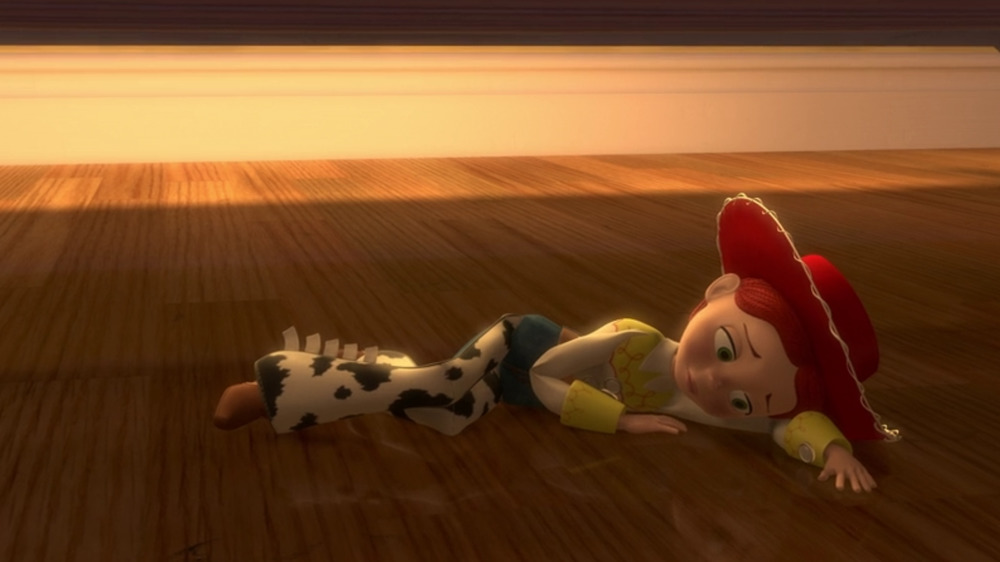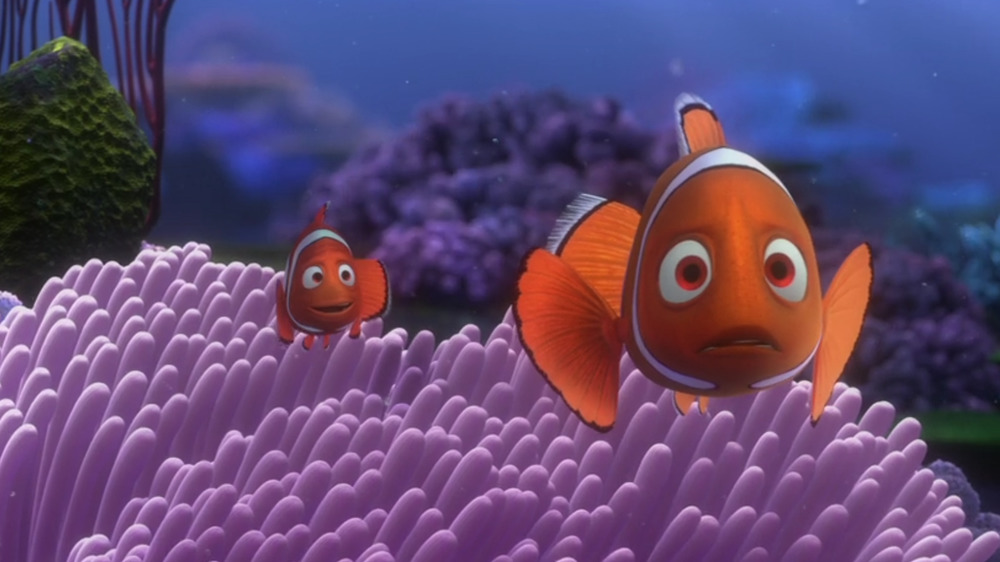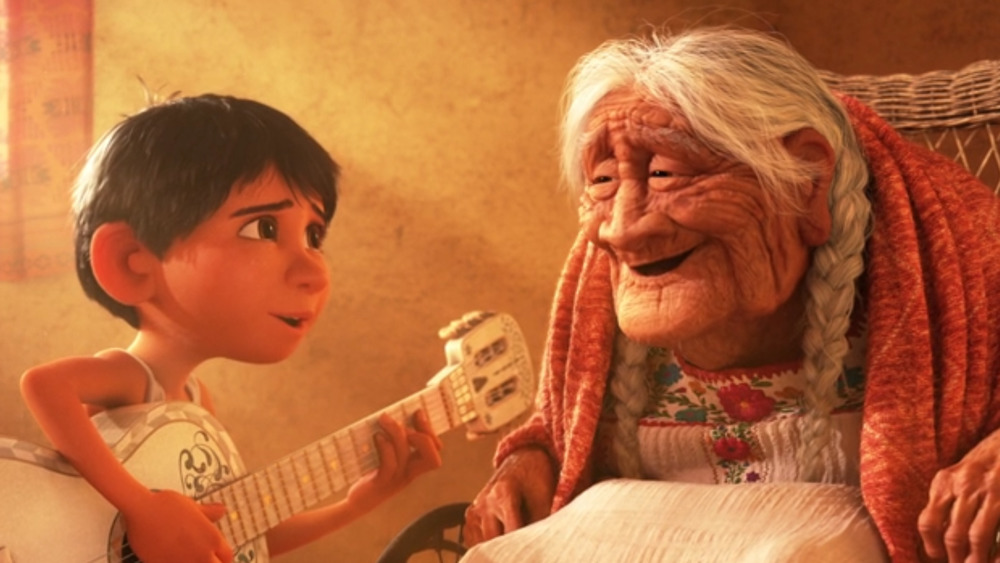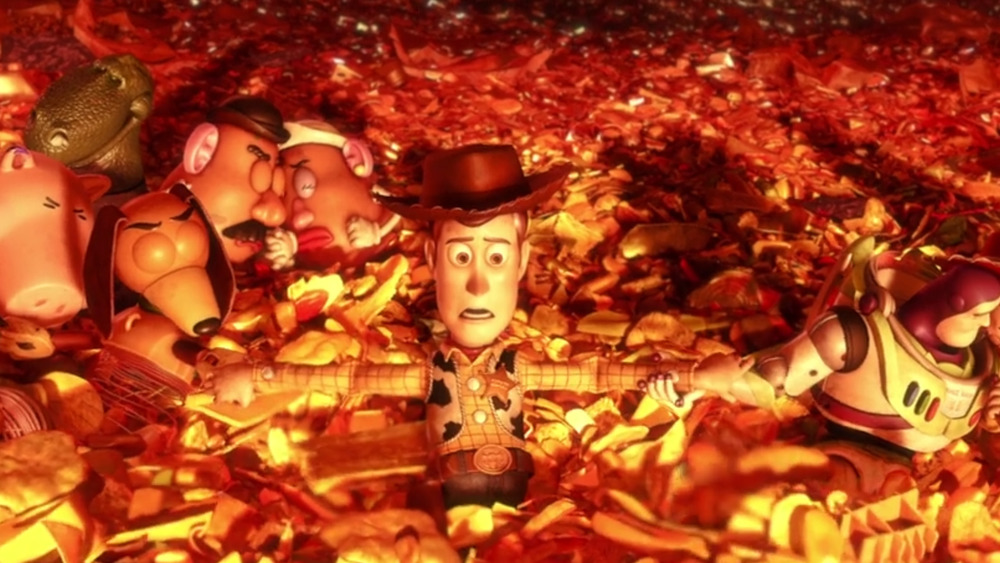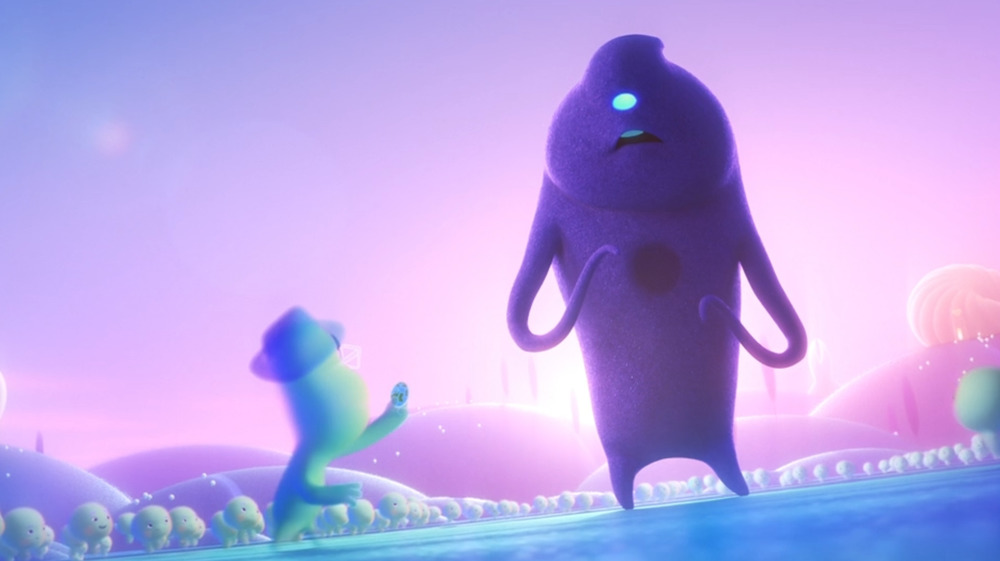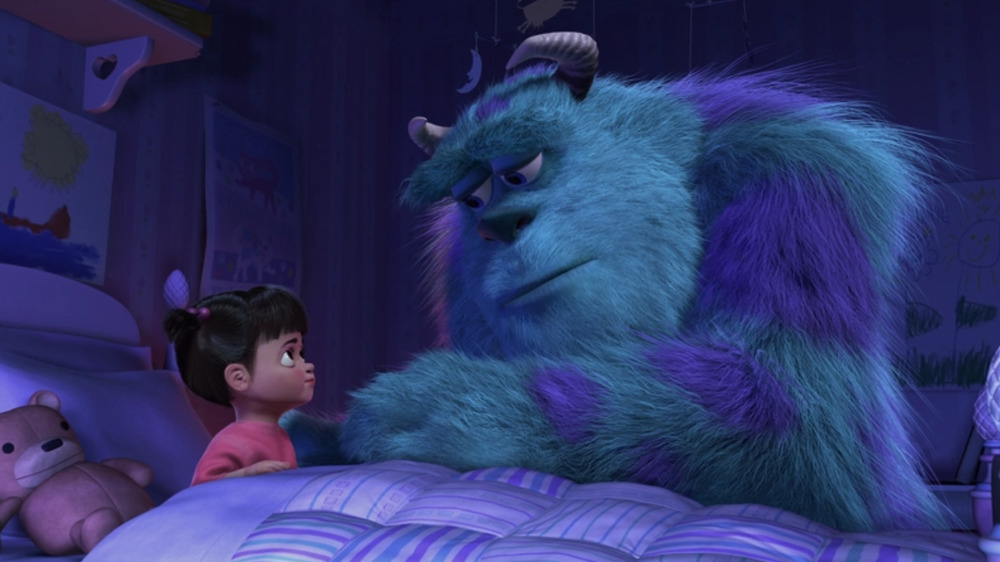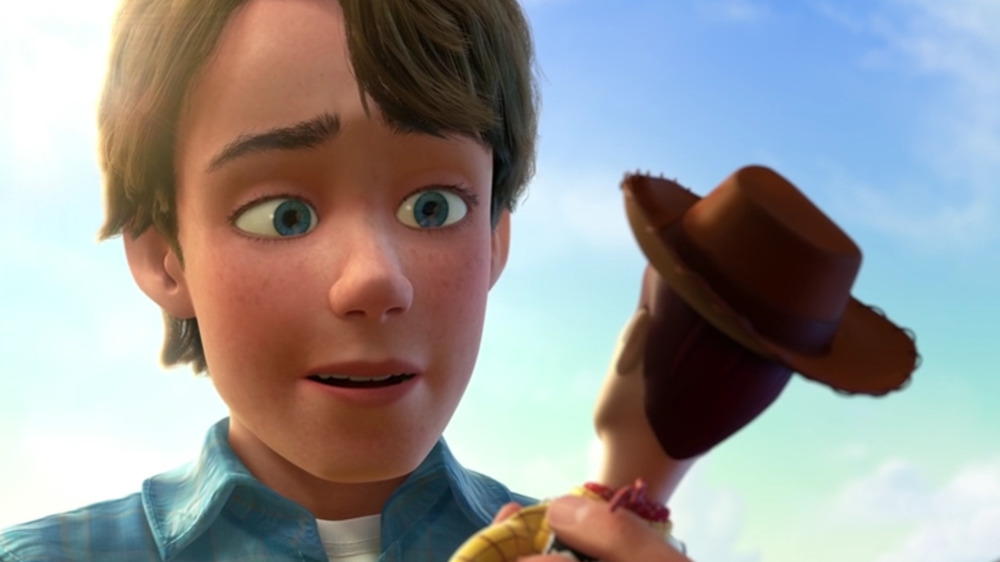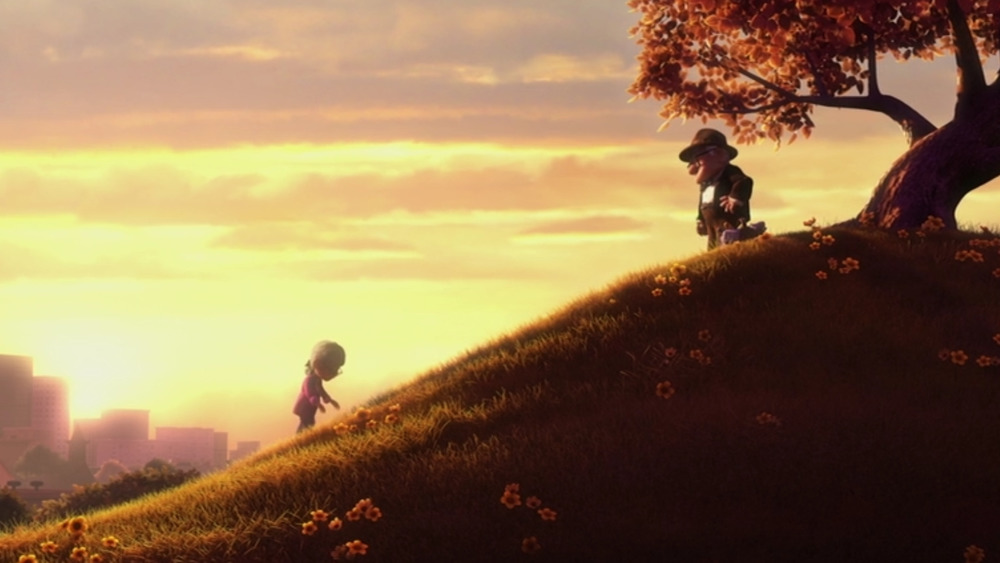The Most Heartbreaking Moments In Pixar Films
Pixar offers cutting-edge digital animation, high-quality voice acting, and well-crafted stories that please critics and audiences alike. But in addition to all that, what they ought to offer is a box of tissues per audience member. Because above all else, Pixar movies famously love to make us cry.
These tearjerkers tend to affect adults as much as — or even more than — kids, so no amount of age or cynicism will keep you emotionally safe through a Pixar marathon. By the time the characters finally reach their happy ending, they need that upbeat conclusion more than ever — and so do we. It's the catharsis that makes the finale all the sweeter and more convincing.
Whether the films are dealing with death, disillusionment, depression, or just the bittersweetness of growing up, they always aim straight for the heart. Let's take a look at the times they hit the mark especially well. Here are the most heartbreaking moments in Pixar films.
(Warning — there are spoilers below.)
We totally tear up when Eve resets WALL-E
In WALL-E, Pixar uses a long, wistful opening sequence to introduce us to our title character, Earth's one remaining garbage-processing robot. Traveling around the wasteland of a trash-filled Earth, WALL-E's mission is to make neat little cubes of junk. But his heart lies with the salvaging of fascinating objects, the tending of his pet cockroach, and his worn VHS tape of Hello, Dolly.
And sure, it's there to help us get to know WALL-E. But it's also there just so it can be ripped away later when the film wants to break your heart. When a crushed WALL-E has been reassembled by his hyper-competent robot girlfriend, EVE, at first it seems like everything will be all right again. But because we know our hero as well as EVE does, we know at once that the real WALL-E is gone. He shows no interest in any of his old treasures — he even squashes them up as garbage — and he runs right over his cockroach friend. When EVE looks in his eyes, we register that she can no longer find him there.
Thankfully, in the best fairy-tale fashion, her spark of a kiss brings him back to himself. And the cockroach lives, as animated sidekicks always do. But for a minute, it seems like getting Earth back has meant losing WALL-E, and he's so lovable that it doesn't even feel like a fair trade.
Buzz learning the truth is a devastating Pixar moment
Pixar mastered the art of heartbreak right out of the gate when it brought Buzz Lightyear's world crashing down around him in Toy Story. Buzz (Tim Allen) is the hot new toy, but he's convinced that he's the "real" Buzz Lightyear, a space ranger saving the galaxy. Nothing — to the frustration of fellow toy, Woody (Tom Hanks) — seems to shake his serene confidence.
Well, that is until he sees a Buzz Lightyear commercial. Faced with an ad that shows him he's just one of many identical toys, with "Made in Taiwan" etched in his plastic spacesuit, Buzz realizes Woody has been right all along. The knowledge clearly shakes him to his core, and he musters one last burst of belief. If he flies, that will prove he's more than a toy.
Of course, he falls, hitting the stairs and tumbling to the floor. In an especially awful detail, one of his arms pops out, making him not just a toy but a broken toy.
It's a great scene, and it's made even greater by the accompanying song — Randy Newman's wistful and melancholy "I Will Go Sailing No More." Pixar wanted to avoid mimicking Disney's style, so it veered away from making an animated musical. The movie only has a few songs, and none of them are sung by the characters. But this one still comes straight from Buzz's heart, and it makes the moment hurt even more.
Bing Bong's death is absolutely heartbreaking
If you watched Inside Out's big death scene — the fading away of imaginary friend Bing Bong (Richard Kind) — and cried, we have surprising news for you: It could've been even worse. The scene actually had to be toned down to be less heartbreaking. Kind reported (via EW) that almost a minute was cut, with the missing moments showing Bing Bong's dawning awareness that he'll have to sacrifice himself if he wants to get Joy (Amy Poehler) out of the Memory Dump to save Riley (Kaitlyn Dias). We're glad these cuts were made because the scene already stomps on our hearts. Who needs an extra minute of that?
Part of the pain comes from just how adorable Bing Bong is. His body is made of cotton candy! Plus, he was specifically designed to evoke struggling, out-of-work vaudeville actors and hobos. But really, what brings most of the tears is the sheer persistence of Bing Bong's love for Riley, the little girl who's already moved on from the cuddly cat-dolphin-elephant who was once her best friend.
Bing Bong doesn't care about saving his own life. When he bails out of his "rocket ship" so Joy can finally fly high enough to escape the Memory Dump, he's ecstatic to see that she's made it, and he takes his disappearance with grace. He's only thinking of Riley. As he tells Joy, "Take her to the moon for me."
When Mr. Incredible stays a hero, it's one of Pixar's darkest scenes
The hardest moment to watch in The Incredibles is actually a moment where heroism wins out. The good guy continues to be good, and yet the scene is still full of a bittersweet, hard-to-take pain.
Before the scene swerves, it's one of the grimmest moments in Pixar history. Mr. Incredible (Craig T. Nelson) is restrained in Syndrome's (Jason Lee) lair, and he has every reason to think that his family is dead. When Syndrome taunts him, Mr. Incredible summons all his strength and lashes out ... but he's not able to grab Syndrome himself, just his villainous subordinate Mirage (Elizabeth Peña). For a moment, we have the hero of the movie holding a woman hostage as leverage against a villain, convincingly threatening to crush her if Syndrome doesn't set him free.
But when Syndrome calls his bluff, we see Mr. Incredible realize that he can't — or, more accurately, won't — do it. He lets Mirage fall to the ground and slumps forward. It's a moment of moral triumph, but it's played with so much exhaustion and resignation that it's devastating nonetheless. The scene shows that sometimes taking the high road costs everything a hero has, and goodness alone doesn't guarantee any victory. This maturely depicted dark night of the soul is one of the best moments in the film.
Jessie's montage destroyed audiences everywhere
There are parts of life that don't get a happy ending. In Toy Story 2, there's one powerful, understated scene proving that
We're talking about the "When She Loved Me" montage, where we see the simple, inevitable tale of a girl growing up and leaving her favorite toy behind. Tragically, it's told from the point of view of the toy, cowgirl Jessie (Joan Cusack). Once, Jessie and Emily were inseparable. But Emily's interests change as she grows up, and one day, when Jessie gets lost, Emily doesn't even miss her enough to look for her. So Jessie simply lies there and gathers dust.
That would be sad enough, but the real gut-punch comes when Emily finds her again. For a moment, Jessie feels like her suffering is over. But then Emily puts her in a donation box and drives away. Making things even more heartbreaking, the whole montage is scored to Sarah McLachlan's "When She Loved Me," which gives the scene an aching sincerity paired with the relentless progression of time.
Sure, Jessie gets a different kind of happy ending as Toy Story 2 wraps up, but her story with Emily still ended with her in a box by the side of the road. It perfectly illustrates why Jessie has so much trouble trusting a child's love and loyalty.
Coral's death is a truly tragic Pixar moment
As harsh as it sounds, dead parents are almost a children's movie cliché. That might be why Pixar usually avoids them. When it tackles that classic tearjerker concept, though, it does it right.
At the start of Finding Nemo, we see Nemo's parents, Marlin (Albert Brooks) and Coral (Elizabeth Perkins), eagerly anticipating when their eggs will hatch. They're funny and likable, universally recognizable as new parents ... and then comes a barracuda.
Marlin tries to get Coral to hide inside "the house," but we see her gaze flit to the only half-hidden eggs. She darts toward them, and the barracuda strikes. Marlin is knocked out trying to come to her aid, so he doesn't see Coral's death. Neither do we. Instead, we just see him wake up and start searching for her — only to find a haunting emptiness. She's gone, and so is every egg but one.
This scene does everything right, but it's especially good because of its contrasts. The familiar everyday happiness of Marlin and Coral at the beginning makes Marlin's devastation even harder to take. The cave full of eggs shows us how wrong it seems when Marlin finds it empty. And it all happens in five minutes, making it a succinct and deeply felt explanation for Marlin's fear of losing his son.
Miguel singing to Mama Coco is both heartbreaking and heartwarming
Music and memory are entangled throughout Coco, so it's no surprise that its key scene uses both to make viewers dissolve into a teary mess.
While temporarily stranded in the Land of the Dead, young Miguel (Anthony Gonzalez) meets the great-great-grandfather his family has scorned for generations, but he learns that the truth is more complicated than everyone believed. While his great-great-grandfather did leave his wife and young daughter to pursue his dream of becoming a musician, he never intended to stay gone forever. He was actually on his way back to his beloved family when he died. And "Remember Me," a song played throughout the movie, was actually a heartfelt plea he wrote for his daughter.
Back in the land of the living, that daughter is now Miguel's Mamá Coco (Ana Ofelia Murguía), an elderly woman whose memories are slipping away from her. Because she's forgetting her father, he is vanishing into nothingness. Then, at the film's conclusion, Miguel rushes home to sing "Remember Me" to Mamá Coco and tell her that her father always loved her. As her wizened face starts to glow with recognition, we understand that Miguel's family has finally been reunited.
It's a moment that will hit home with anyone who's ever dealt with the special pain of a loved one suffering from that kind of confusion, and it manages to be heartwarming and heartrending all at the same time.
Toy Story 3 tackles death head-on
The internet abounds with discussions of how Toy Story 3 is a surprisingly sophisticated exploration of different interpretations of the afterlife, but one of the film's best moments isn't about what happens after death. It's about how we die, and what that means about how we've lived. What do you want to hold onto in your last moments?
In Toy Story 3, the answer is simple — each other. At the film's darkest moment, the toys all wind up on an incinerator belt headed for the flames. There's nothing they can do, so with heartbreaking simplicity, they reach out and hold each other's hands as they wait to die. Their calm unity in the face of the seemingly inevitable is beautiful and transcendent, and the image of them all holding onto one another lingers long after the movie's credits have rolled.
Yes, they get saved from the incinerator. But the moment right before rescue comes shows that while their physical safety matters, their sense of togetherness matters even more. When they're all they have left, they can still comfort each other. And for viewers — who know that the unavoidable someday comes for everybody — that's a valuable message. The scene aims squarely at our hearts, and it definitely hits home.
Soul deals with the topic of depression and fixation
In Soul, jazz pianist and music teacher Joe (Jamie Foxx) has spent his life waiting for his big break. When it finally comes, an unexpected detour to another plane of existence helps him notice everything he missed while he was waiting for his life to start.
One of the things Joe learns is that while the transformative passion of being "in the zone" is great, it's only a few steps removed from the grinding monotony of despair. In Soul, people who get stuck on a single idea become "lost souls," nearly featureless blobs of sand who wearily go through the motions. It's a powerful image of depression and the darker side of fixations.
What really makes the observation hit home is when 22 (Tina Fey), the soul Joe has been mentoring, takes his angry outburst to heart. When she can't stop thinking about it — and all the bad memories it calls up — the sand rises around her, trapping her in the feeling that she's just no good. It's a tearjerker moment, and it shows how easy it is for life to swallow people up.
It also makes the concept of "lost souls" relatable to kids, especially key in a movie that's mostly about a midlife crisis. While children hopefully aren't worried about getting lost in soulless jobs or isolating obsessions, they definitely know the way hurtful words can circle around inside your head and drown everything else out.
Sulley's goodbye is heartbreaking for kids and adults
Monsters, Inc. has a scene that's as quietly emotionally devastating as anything in Pixar's repertoire of heartbreak. And it all hangs on the fact that one character can't quite grasp what's going on.
John Goodman voices the goodhearted monster Sulley, who gets attached to an adorable little girl he nicknames Boo. But as the film's corporate intrigue plot wraps up, he finds out he'll have to say goodbye to Boo forever. The Child Detection Agency is going to destroy their copy of her closet door, cutting off all access. Sulley gets five minutes to let her go, and it's a moment that's almost impossible to watch without tearing up.
Sulley tucks Boo into bed with her teddy bear and visibly struggles to think of what to say because he knows she's too young to completely understand him. They share one last hug ... and then Sulley goes. All that would be bad enough, but we see something even Sulley doesn't. Boo, still hopeful, goes to open her door again to be reunited with her beloved monster. Instead, all she finds is an ordinary closet.
The film then cuts to the door being shredded, and our hearts are shredded along with it. We've never been happier to realize a movie still has a couple minutes left to make things turn out all right after all.
Toy Story 3's ending gets us choked up
Sometimes the bittersweet breaks our hearts just as thoroughly as the outright devastating, and that's the case with the nuanced ending of Toy Story 3.
Andy (John Morris) is grown up and ready to head off to college, and he's turning over his old playthings to Bonnie (Emily Hahn). His affection for them is obvious, and he wants to know they'll be safe and appreciated in Bonnie's keeping. There's a quiet sadness to it all, but that alone wouldn't be enough for it to make this list.
But then, Andy finds the one toy he didn't mean to give away — Woody, who was supposed to be in the box earmarked for his move to college. At first, Andy can't give him up. But as Bonnie reaches out for Woody, Andy realizes what he has to do. It's like he comes to the conclusion that Woody shouldn't be separated from the rest of his friends. He shouldn't be a relic of Andy's childhood but a living part of Bonnie's.
It's that epiphany — one that implies that he almost understands that the toys are real, living things — that nails what Woody has always said about Andy: He's a special kid. And as Bonnie lifts Woody's hand to wave goodbye to Andy, Andy's breath catches in his throat, and the scene earns its place in heartbreaking history.
Up's opening might be Pixar's saddest scene ever
The "Married Life" montage in 2009's Up is a graceful, wordless portrait of Carl (Ed Asner) and Ellie's life together, encompassing growth, heartache, joy, contentment, and loss. It has the texture of real life, which is exactly what you need to get audiences emotionally invested before a (literal) flight of fancy where a house travels via hundreds of balloons.
There are two elements that make this montage so moving. The first is how quietly and swiftly it conveys the reality of Ellie's miscarriage and, years later, her death. The transition from Carl and Ellie cheerfully painting a nursery to Ellie slumped in a chair in a hospital room is especially painful because of how matter-of-fact it is. Older Ellie stumbling when trying to climb the hill she once raced up works in just the same way. These are the kind of universally recognizable images where any dialogue would be superfluous. These are things everyone understands.
But the second element is maybe the most important. It's not a single image — it's just the way the sequence captures the ups and downs of a long life. If you watch this Pixar scene as an adult, you're just as likely to cry over how Carl and Ellie have to keep smashing their money jar — deferring their dreams for the sake of hospital bills and new tires — or Ellie repeatedly straightening Carl's tie for him. Pretty much nobody gets out of this scene dry-eyed.
